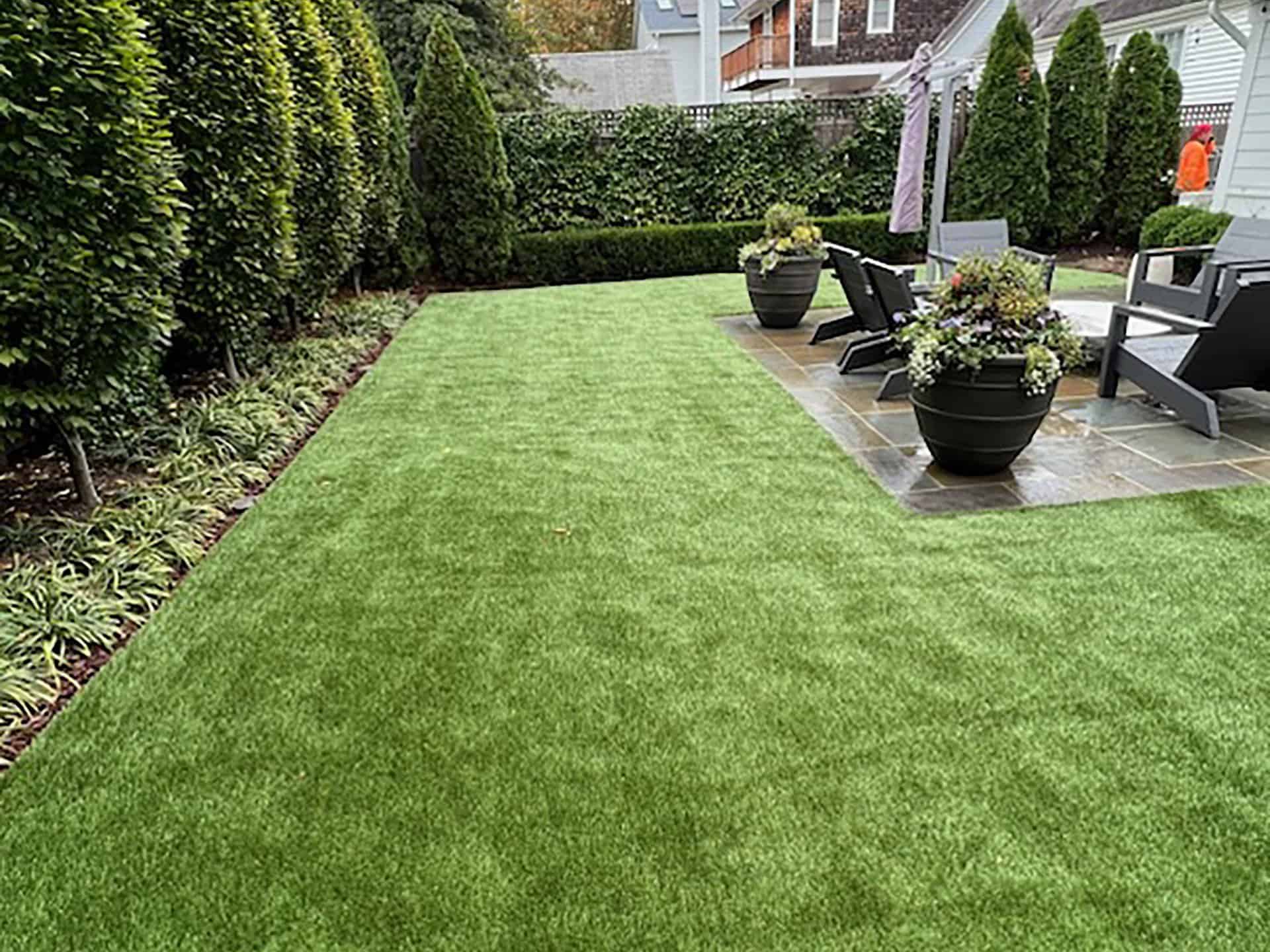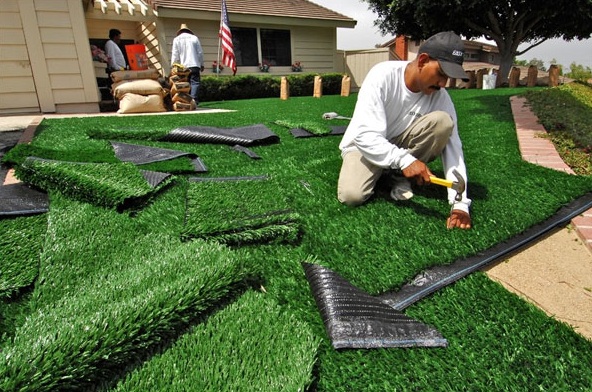Select Reputable Artificial Turf Companies Phoenix for Durable and Realistic Grass
Select Reputable Artificial Turf Companies Phoenix for Durable and Realistic Grass
Blog Article
Explore the Environmental Advantages of Opting for Synthetic Grass Solutions
The adoption of synthetic lawn remedies provides a compelling opportunity to address pushing environmental challenges. By considerably reducing water use and reducing the application of hazardous chemicals, these options not only advertise sustainable landscape design but additionally protect neighborhood ecological communities. Furthermore, the lower carbon impact connected with lowered upkeep tasks adds to a more lasting technique to land management. Nonetheless, the implications of these benefits expand past plain preservation initiatives, raising inquiries about their long-lasting influence on environment conservation and overall eco-friendly equilibrium. Discovering these dimensions reveals an intricate interplay worth taking into consideration.
Water Conservation Benefits
One of the most considerable advantages of man-made grass is its capacity to preserve water. In contrast, fabricated lawn does not need watering, significantly reducing the overall demand for water sources.
By eliminating the demand for routine watering, artificial grass adds to sustainable landscape techniques and helps alleviate the environmental impact of too much water consumption. The preservation of water extends to the decrease of drainage, which can lead to dirt erosion and river air pollution.
Additionally, the installation of synthetic grass enables districts and property owners to allocate water resources a lot more effectively, concentrating on important usages such as alcohol consumption water and farming. The shift in the direction of artificial grass not only advertises responsible water usage however additionally straightens with more comprehensive environmental goals targeted at preserving natural deposits.
As neighborhoods progressively focus on sustainability, the water conservation benefits of fabricated grass offer an engaging instance for its fostering in household and commercial landscaping jobs.
Lowered Chemical Use
The change to synthetic grass substantially reduces the dependence on chemical treatments typically utilized in all-natural lawn upkeep. Standard grass monitoring typically entails the application of herbicides, fertilizers, and pesticides to advertise development and control insects. These chemicals can pose threats to human health, neighborhood wild animals, and the environment, adding to soil and water contamination.
On the other hand, synthetic grass eliminates the requirement for these unsafe materials. When installed, it calls for marginal maintenance, mainly consisting of normal cleaning and seldom infill replenishment. This decrease in chemical usage not just benefits the instant setting however likewise adds to more comprehensive eco-friendly stability. By minimizing the release of artificial compounds right into the community, synthetic grass promotes much healthier soil and water supply.
In addition, the absence of chemical drainage related to man-made grass installments helps secure local waterways from air pollution, supporting water life and keeping biodiversity. Phoenix turf companies. As communities progressively focus on lasting practices, selecting artificial grass offers a viable service that lines up with ecological conservation goals. With this change, home proprietors can enjoy rich green rooms without compromising environmental health and wellness, leading the way for a more lasting future
Lower Carbon Impact

Moreover, the installment of artificial grass can cause substantial water conservation. Natural yards call for substantial amounts of water for irrigation, which not only contributes click over here to the carbon footprint related to water extraction and treatment however additionally strains regional water resources. In contrast, man-made lawn needs minimal maintenance, requiring no watering, thereby considerably decreasing water usage and its associated energy costs.
Additionally, the longevity of synthetic grass click here for info adds to its reduced carbon impact. With a life-span of as much as 15 years or even more, the requirement for regular replacements is reduced, causing much less waste and reduced energy consumption in manufacturing and throwing away typical lawn options. Generally, synthetic grass offers a sustainable alternative for ecologically conscious landscape design.
Habitat Preservation
Environment conservation is an important factor to consider in the argument over landscaping choices, particularly when contrasting synthetic grass to natural grass. All-natural lawn lawns often require comprehensive upkeep, consisting of making use of chemicals, plant foods, and herbicides, which can negatively impact neighborhood ecosystems. These chemicals can seep into the dirt and waterways, damaging native vegetation and fauna and disrupting regional habitats.
On the other hand, synthetic grass offers a chance to reduce the environmental footprint of landscape design. By choosing artificial turf, property owners can minimize the interruption of all-natural habitats connected with conventional grass care methods. Synthetic grass removes the requirement for hazardous chemicals, consequently protecting nearby wild animals and maintaining the stability of bordering ecosystems. The setup of fabricated lawn can lead to the conversion of previous turf locations right into even more biodiverse landscapes, such as pollinator yards or indigenous plant locations, which can support regional wild go animals.
Ultimately, the transition to synthetic turf not only preserves water and lowers upkeep initiatives however also promotes a more harmonious partnership between human activities and the natural atmosphere, advertising environment preservation while doing so.
Long-Term Sustainability
Long-lasting sustainability is an essential consider reviewing the advantages of synthetic grass over standard grass lawns. Among one of the most significant benefits of artificial grass is its durability; it can last as much as 15-20 years with marginal upkeep, whereas all-natural yard needs regular reseeding and substitute. This longevity minimizes the demand for consistent sources, such as water, plant foods, and pesticides, which are vital for preserving a healthy and balanced turf yard.
Furthermore, synthetic grass adds to a decrease in carbon discharges related to grass care tools. Conventional grass often call for gas-powered mowers, leaners, and blowers, every one of which contribute to air pollution. Arizona turf. On the other hand, synthetic grass removes the requirement for such tools, promoting a cleaner setting
Moreover, the production of synthetic lawn progressively makes use of recycled materials, improving its sustainability account. As suppliers adopt eco-friendly methods, the ecological impact of synthetic lawn continues to lessen.

Verdict
The fostering of artificial lawn services presents considerable environmental advantages, including considerable water conservation, lowered reliance on hazardous chemicals, and a lower carbon impact. Moreover, synthetic lawn help in protecting natural habitats by lessening land disruption and advertising long-lasting sustainability with using resilient products. Jointly, these elements emphasize the capacity of synthetic grass to add favorably to environmental wellness and use a viable alternative to standard landscape design practices in a progressively resource-conscious globe.
In comparison, synthetic grass does not require watering, considerably reducing the general need for water sources. By decreasing the release of synthetic substances right into the ecosystem, synthetic grass advertises much healthier soil and water systems.
Additionally, the setup of man-made lawn can result in significant water conservation. In contrast, man-made grass requires very little maintenance, requiring no watering, thus substantially minimizing water use and its linked energy costs.

Report this page